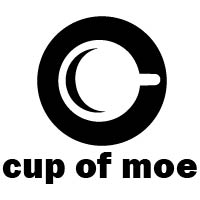We may earn money or products from the companies mentioned in this post.
Science fiction films range from cinematic poetry a la “2001: A Space Odyssey,” to slasher flicks in space such as “Alien.” Geoff Murphy-directed 1985 sci-fi masterpiece “The Quiet Earth” opts for a thought-provoking narrative which blossoms into a delightful genre flick.

After arriving his subterranean lab, Zac hypothesizes that his work on Project Flashlight, an experimental global energy grid, somehow wiped out all life on Earth. He notes, “Zac Hobson, July 5th. One: there has been a malfunction in Project Flashlight with devastating results. Two: it seems I am the only person left on Earth.” Believing himself the only survivor, Hobson initially relishes in his newfound solitude. The moment in time where Project Flashlight obliterated Earth’s lifeforms becomes known as “The Effect.”
But after some time, Hobson realizes that there are other survivors. Zac meets Joanne (Alison Routledge), quickly developing an attraction to her, though there’s admittedly not much choice. The pair happen upon Api (Pete Smith), and together the trio sets out to uncover why they’re alive, and probe The Effect.
“The Quiet Earth” carries undeniable similarities to post-apocalyptic films such as “The Last Man on Earth,” and “Dawn of the Dead.” Throughout the narrative, there’s a continued evolution, namely of Hobson’s understanding of both The Effect as well as himself. Initially, Zac delights in his involuntary solitary confinement. He progressively explores more extravagant abandoned homes in a scene evocative of “Night of the Comet.” But what begins as his greatest wish transforms into a personal hell. Until, that is, Hobson makes the acquaintance of Joanne. The equilibrium of their relationship, a product of convenience in itself, is disrupted by Api who unwittingly completes their awkward love triangle.
All the while, Hobson takes notes on his voice recorder in an attempt to discover what The Effect is, and how it operates. Eventually, he manages to reveal why The Effect occurred. This investigatory element puts the science in sci-fi, toning down the fictional vibe. John Charles handles the score which provides a thoughtfully unsettling auditory backdrop. The effects are gorgeous, particularly scenes of The Effect, and the awe-inspiring finale shot which, pleasingly, is left open to audience interpretation.
“The Quiet Earth” accomplishes much with its effective minimalism. Featuring a cast of just three characters, it relies heavily on atmosphere. Long, panning shots increasingly give scale to the level of catastrophe which befell the Earth at the beginning. The ambiguous ending and plodding yet riveting pace makes this a refreshing watch. An enjoyable, provocative movie “The Quiet Earth” ranks among the top sci-fi films to date.
This post may contain affiliate links. We are a participant in affiliate programs such as the Amazon Services LLC Associates Program, an affiliate advertising program designed to provide a means for us to earn fees by linking to Amazon.com and affiliated sites. However, all products are thoroughly tested and reviews are honest and unbiased.
